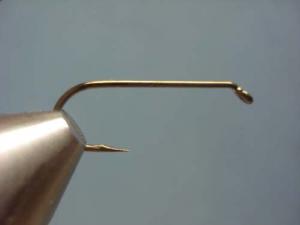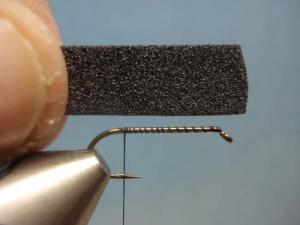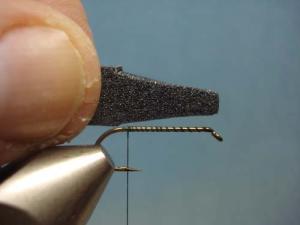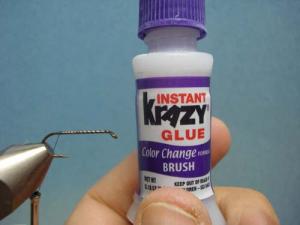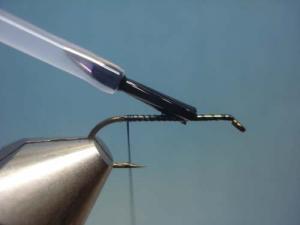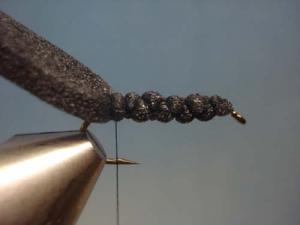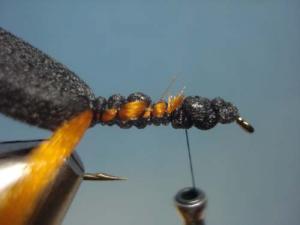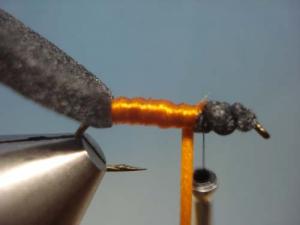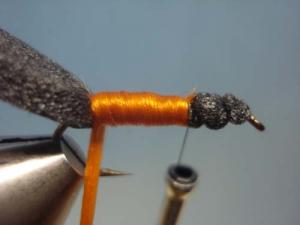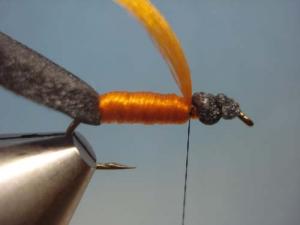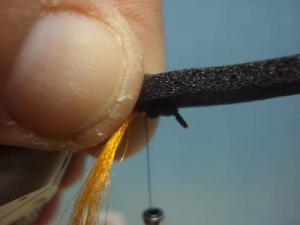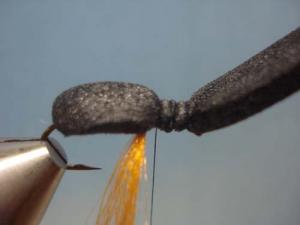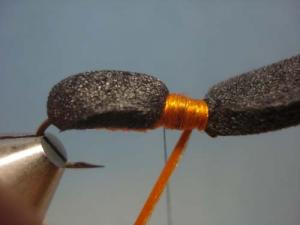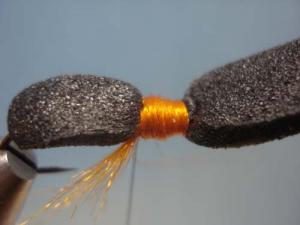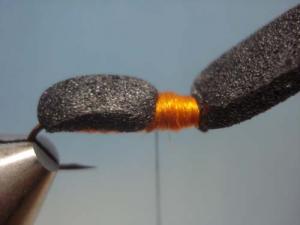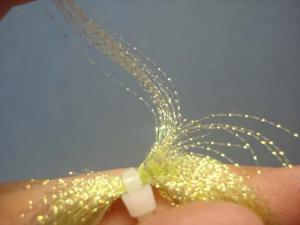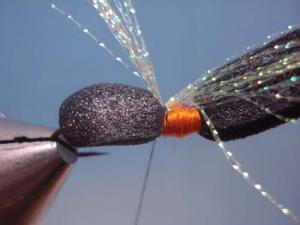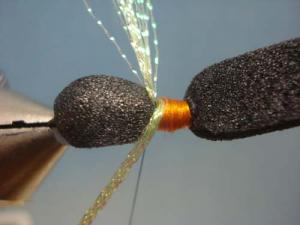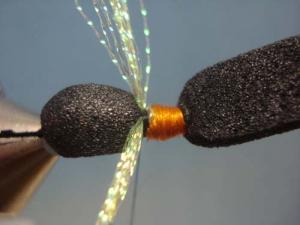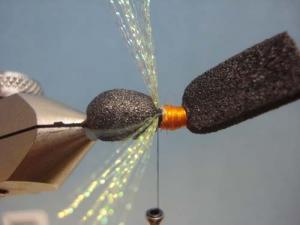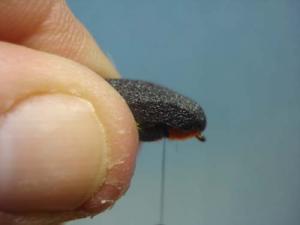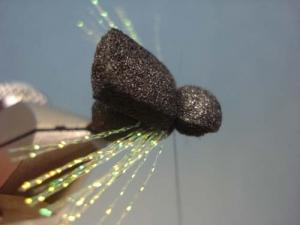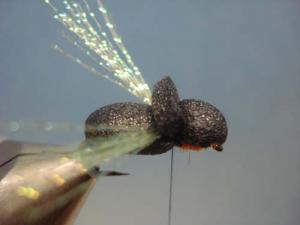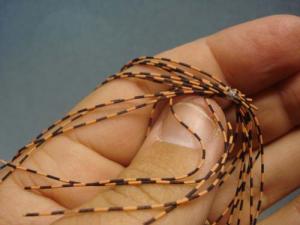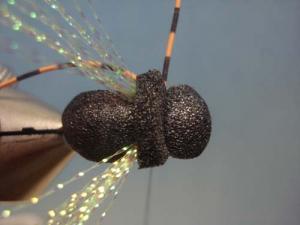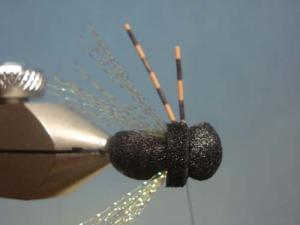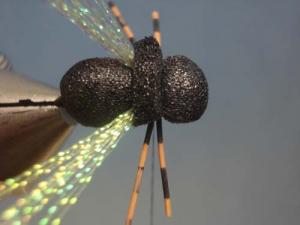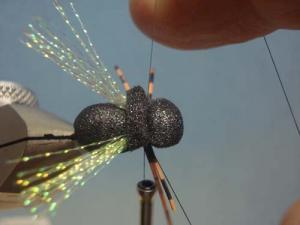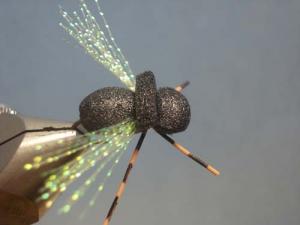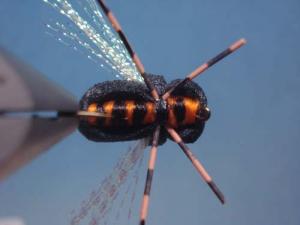LW's Periodical Cicada
Fly and Photos by Loren Williams
I'm not going to try and explain about the exciting cicada when Penn State's very own Greg Hoover has written an excellent article on the subject. Since Greg also fishes I find his words to be particularly relevant. Below is a citation from the article. Under that is a link to the article itself.
----------
"The periodical cicada is a native North American species. It is the longest-lived insect in North America. No other insect in North America generates as much interest and curiosity as do periodical cicadas when they make their sudden, springtime emergence. They are widely distributed over the eastern half of the United States and occur nowhere else in the world.
Periodical cicadas are commonly called or referred to as "17-year locusts." Early American colonists had never seen periodical cicadas. They were familiar with the biblical story of locust plagues in Egypt and Palestine, but were not sure what kind of insect was being described. When the cicadas appeared by the millions, some of these early colonists thought a "locust plague" had come upon them. Some American Indians thought their periodic appearance had an evil significance. The confusion between cicadas and locusts exists today in that cicadas are commonly called locusts. The term "locust" is correctly applied only to certain species of grasshoppers.
There are six species of periodical cicadas, three with a 17-year cycle and three with a 13-year cycle. The three species in each life-cycle group are distinctive in size, color, and song. The 17-year cicadas are generally northern, and the 13-year cicadas southern with considerable overlap in their distribution. In fact, both life-cycle types may occur in the same forest.
For convenience of reference, each "brood" has been designated by a Roman numeral. The numerals I through XVII are assigned to the 17-year broods, and XVIII through XXX to the 13-year broods. The numbering of the 17-year broods began with the 1893 brood which was designated as Brood I. In 1909, Brood XVII appeared, and in 1910, Brood I appeared again. There are at least 13 broods of 17-year cicadas and five broods of 13-year cicadas. "
-Greg Hoover, Sr. Extension Associate
Revised November 2003
Periodical Cicada Article (Greg Hoover, PSU)
----------
The pattern described is my take on some of the more appealing cicada patterns I have seen and used. As typical, I try to make my patterns as simple as possible and still do the job. With cicadas, there are a number of triggers I feel one should try to mimic. First is the obvious stout, robust profile. Cicadas are shorter than most people think, and very broad. I do feel too much emphasis is placed on imitating the coloration of the abdomen. As you will see, I prefer to focus on the profile. Second, cicadas are cumbersome and will certainly make a disturbance when they hit the water. The pattern must be built so that it will "splat" resoundingly. Too much fluff will slow it's descent. Third, cicadas have oversized, and very apparent wings. They need to be included. The trick then is to sum these all into a pattern that will float, catch fish, and not require an epoch at the vise.
I think this pattern suits the bill.
MATERIALS
Hook: 2XL Dry Fly Hook, #10
Thread: Black
Underbody: Black 3mm fly foam
Abdomen: Rusty Orange Antron Yarn
Over Body: Black 3mm Fly Foam
Wings: Pearl Krystal Flash
Thorax: Rusty Orange Antron Yarn
Head: Black 3 mm Fly Foam
Legs: Orange Centipede Legs
Click photos to enlarge!
